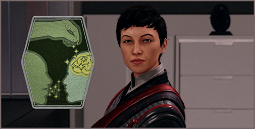Failing a Die Roll in Dungeons & Dragons
Failing a die roll can be demoralizing, but it doesn’t have to be. Whether you’re a Dungeon Master or a player, there will be times when you miss a crucial Skill Check or Saving Throw. Instead of letting it derail your campaign, learn how to turn failed rolls into opportunities for storytelling.
Letting your players “fail forward” can increase tension and add unexpected twists to your D&D campaign. Even the best characters will occasionally screw up, so it’s important to know how to handle these situations and keep the story moving forward. Embrace improvisation when dealing with failed rolls and consider how the new situation can affect the story you have planned. Here are some examples of failing forward and how to use them to enhance your D&D sessions.
What is Failing Forward?
Failing forward means that a failed roll is not due to the character’s lack of ability, but rather an unforeseen complication. These complications can lead to extra encounters, side quests, or new storylines that weren’t part of your campaign plan.
Here are some examples of failing forward:
Embrace the unexpected and turn failed rolls into memorable storytelling moments in your D&D campaign. Learn how to prepare for these twists and surprises to keep your players guessing whether a twist was planned or improvised.
How to Resolve Failed Rolls
Resolving the new situation becomes a priority for the player characters before they can continue their journey, which often leads to an unexpected encounter or new storyline. The change in circumstances may also open up new paths for the heroes to explore, despite the setback.
By turning failed rolls into unexpected storytelling, you can keep your D&D players on their toes and engaged in the game. Keep your players guessing whether a twist was planned or improvised by regularly using failed rolls to enhance the tension and excitement in your D&D sessions.
The best Dungeon Masters are always prepared to adapt and improvise, so make sure you’re no stranger to failed rolls by keeping these tips in mind. Embrace the spirit of failing forward to create a dynamic and engaging D&D campaign that your players won’t forget.















